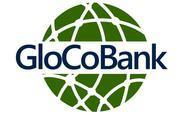Multilateral Clearing from Theory to Practice: The Deutsche Verrechnungskasse during World War II
Adrien Faudot, University of Grenoble Alpes
This article sets out the issues that arose for German leaders during the Second World War, concerning Germany's external monetary relations. Until 1940, European monetary relations had been governed exclusively by bilateral clearing agreements, but there was in 1940 talk of integrating the various allied or newly occupied countries into a monetary area on a multilateral basis. Integration was to be based on emancipation from gold and on states being omnipresent in foreign economic relations through strict exchange controls in each country. Walther Funk, President of the Reichsbank and Reich Minister for Economic Affairs, made the German project public in a speech on 25 July 1940. For Germany, this integration offered several advantages, starting with a relaxation of the constraints weighing on its balance of payments - constraints that were particularly severe in the 1930s. It would also simplify the organisation of trade, which had become complex due to the multitude of bilateral agreements. The German plans were widely discussed internally by several ministries and government departments, and then commented on in Europe. They have also been the subject of a relatively extensive academic literature, since they are considered to be the founding texts of European integration.
In practical terms, these projects meant that each country would participate, via a central bank or an ad hoc institution such as a clearing office, in the Deutsche Verrechnungskasse (DVK), the German clearing institute. Created by Hjalmar Schacht in 1934, this institution gradually evolved to serve as a clearing centre for all countries trading with Germany. It brought together up to twenty-six countries. The Reichsmark was the reference currency. Each country kept balances in Berlin for transactions, not only with Germany but also with other countries in the region. The prolonged war changed the nature of the monetary integration process. In practice, this integration rapidly led to widespread looting and economic exploitation of neighbouring countries, which was partly reflected in the accounts of the Berlin-based institution responsible for carrying out the exchanges. At the end of the war, many countries were creditors to the DVK, such as France and Belgium, which ended the war with more than 8 and 5 billion Reichsmarks respectively. These were contributions to Germany's war effort. A handful of countries escaped this logic and were relatively untouched by exploitation, either because they were of strategic importance to Germany (as in the case of Switzerland), or because they were allies that were more difficult to exploit without compensation (as in the case of Italy).
Integration within the DVK implied a standardisation of practices between member countries. Between 1940 and 1941, the countries of continental Europe signed numerous agreements governing trade between themselves and not just with Germany, although Berlin orchestrated the agenda for these protocols. Berlin remained at the heart of this clearing system, through the DVK. Multilateral clearing (Mehrseitiges Clearing) was also introduced in the summer of 1940. This played only a minor role in the total number of exchanges recorded within the DVK, due to the war, which made exchanges that did not benefit the war effort unacceptable. Nevertheless, the institution enabling multilateral payments was built. Germany's approach subsequently served as a reference for other multilateral clearing projects.
The article has several aims: to introduce the process of monetary integration in 1940, to explore the role of the DVK and how it functioned, and finally to analyse the problems of asymmetry and adjustment between countries that arose within this payments system. Although the European monetary integration projects of the period are relatively well known, the importance of the DVK as a specific institution has been ignored by contemporary economists, and has only been briefly addressed by a few historians and specialists of the period. This work is based mainly on the German federal archives (BundesArchiv) located in Berlin-Lichterfelde.
Adrien Faudot is Assistant Professor of Economics at the University of Grenoble Alpes. He teaches at the IUT of Valence (France) and is a member of the CREG (Centre de Recherche en Economie de Grenoble). His research focuses on international monetary economics, history of economic thought, and development economics. His current research program deals with historical experiences of international clearing.
He his co-editor of the Revue d'histoire de la pensée économique, a history of economic thought journal. His works have been published in peer-reviewed journals, including Cambridge Journal of Economics, Review of Political Economy, European Journal of the History of Economic Thought and Review of Keynesian Economics.



